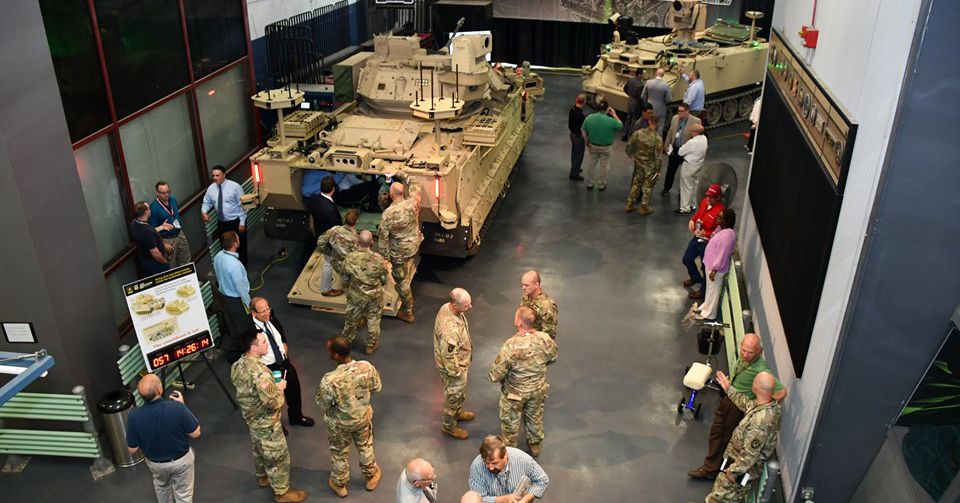Decades after his chemical castration by the British government and subsequent suicide, Alan Turing, the wartime codebreaker, pioneering computer scientist, and founder of artificial intelligence, will appear on the nation’s 50 pound note.


U.S. Army game-theory research using artificial intelligence may help treat cancer and other diseases, improve cybersecurity, deploy Soldiers and assets more efficiently and even win a poker game.
New research, published in Science, and conducted by scientists at Carnegie Mellon University, developed an artificial intelligence program called Pluribus that defeated leading professionals in six-player no-limit Texas hold’em poker.
The Army and National Science Foundation funded the mathematics modeling portion of the research, while funding from Facebook was specific to the poker.


Since its invention by a Hungarian architect in 1974, the Rubik’s Cube has furrowed the brows of many who have tried to solve it, but the 3D logic puzzle is no match for an artificial intelligence system created by researchers at the University of California, Irvine.
DeepCubeA, a deep reinforcement learning algorithm programmed by UCI computer scientists and mathematicians, can find the solution in a fraction of a second, without any specific domain knowledge or in-game coaching from humans. This is no simple task considering that the cube has completion paths numbering in the billions but only one goal state—each of six sides displaying a solid color—which apparently can’t be found through random moves.
For a study published today in Nature Machine Intelligence, the researchers demonstrated that DeepCubeA solved 100 percent of all test configurations, finding the shortest path to the goal state about 60 percent of the time. The algorithm also works on other combinatorial games such as the sliding tile puzzle, Lights Out and Sokoban.

Science, Space & Robotics News | Posted: 9 hours, 42 mins ago.
Comment | Email to a Friend | Font Size: AA.
Boeing is building a killer robot which will “decide when, where — and who — to shoot”
Lethal. Cheap. Smart. Australia’s air force will become one of the first in the world to put ‘killer robots’ in the skies alongside its combat pilots. But are we opening a Pandora’s box?
This can also be done with a brain in a jar hooked-up to A.I…
*** As featured on the Colbert Report — June 4, 2009 ***
http://watch.thecomedynetwork.ca/library/#clip180735
For the first time in the world, transplant surgeons, led by Dr. Shaf Keshavjee, used a new technique to repair an injured donor lung that was unsuitable for transplant, and then successfully transplanted it into Andy Dyksrta.
Dr. Keshavjee and his team have developed an ex vivo or outside the body technique capable of pumping a bloodless solution containing oxygen, proteins and nutrients into damaged donor lungs. This technique allows the surgeons the opportunity to assess and treat damaged donor lungs, while they are outside the body, to make them suitable for transplantation. To find out more about this research milestone, and others like it, visit www.tgwhf.ca!


American scientist and best-selling #scifi author David Brin predicts what our world would like in the year 2050. Read it on our #Earth2050 platform:
By 2040, the international community has concluded that using nonrenewable resources is irrational. The first kind of asteroid to be mined was of the carbonaceous variety, to get water that can keep astronauts alive, or be used to create rocket fuel. Later, explorers prospected dozens of other varieties of asteroids with suitable iron, nickel, cobalt, platinoid, and rare-earth element deposits. Odyssey is the first ever space base focused on mining these minerals.
The station was launched in 2049. Because of magnetic storms and drastic changes in temperature, the main part of the base had to be built several meters below the asteroid’s surface. Almost all work on the base was automated. Small teams of engineers and technicians needed for station management stay for 6-month shifts. Using solar mirrors, they melt and refine precious metal ores and blow them into gleaming bubbles that can safely descend through Earth’s atmosphere to float in the ocean, for collection. The iron is used for construction in space.
This space project — the Odyssey — is so profitable that on April 22, 2055, Earth Day, the UN’s General Assembly adopts a resolution: to decrease mineral mining on our planet and to transfer some profits made from space to restore and preserve the Earth’s ecology.
The success of the project is based not only on the commercial value of mining but also on scientific advancements. The Odyssey houses laboratories with different specializations. New space discoveries make it possible to create new stations and even cities farther away from Earth.

Nanoprobes were microscopic robotic devices used by the Borg for the primary purpose of assimilation, as well as to help maintenance and even repair their mechanical and biological components on a microscopic level. Injected into a target’s bloodstream via assimilation tubules, the nanoprobes immediately began to take over the host cells’ functions. Nanoprobes could also be modified for a variety of medical and technical tasks.